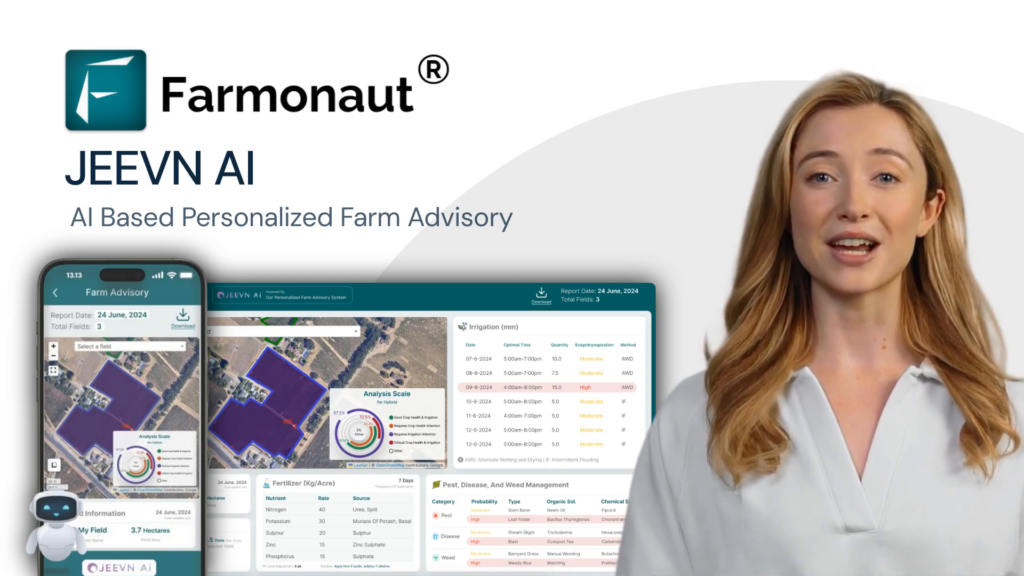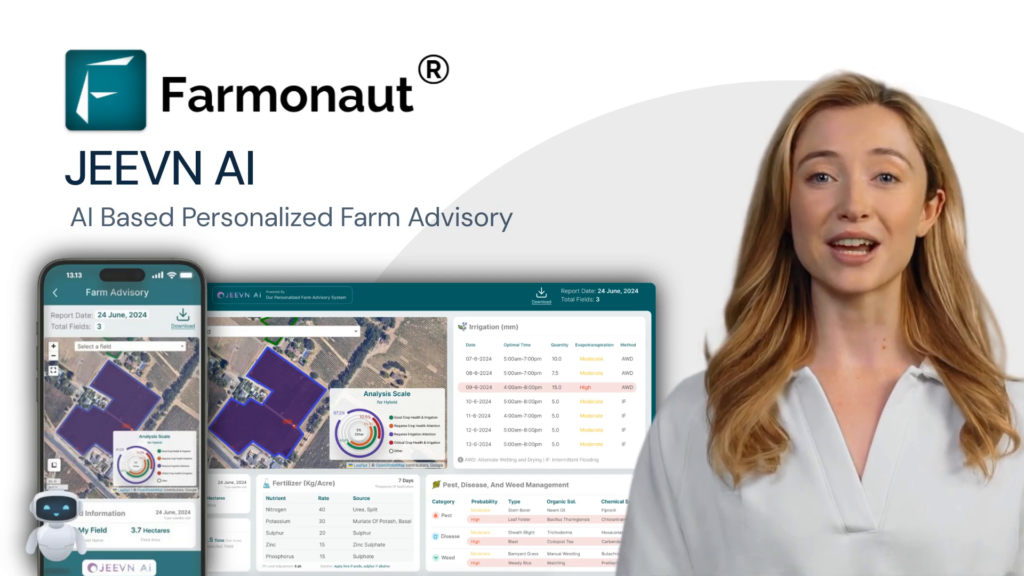Mastering Southwestern Corn Borer Management: Integrated Pest Strategies for Iowa Farmers to Boost Yield and Protect Crops
“Southwestern corn borers can cause up to 25% yield loss in heavily infested corn fields.”
Welcome, Iowa farmers and agricultural enthusiasts! Today, we’re delving into the world of southwestern corn borer management, a critical aspect of corn pest control strategies that can significantly impact your yield and crop health. As we explore integrated pest management in corn, we’ll equip you with the knowledge and tools necessary to protect your valuable crops from this persistent threat.

Before we dive into the specifics of southwestern corn borer management, let’s take a moment to understand why this pest is such a significant concern for corn growers across the southern United States and increasingly, in states like Iowa. The southwestern corn borer (Diatraea grandiosella) is a formidable adversary that can wreak havoc on corn crops, leading to substantial yield losses and increased susceptibility to other diseases.
Understanding the Southwestern Corn Borer
The southwestern corn borer is a moth species whose larvae cause extensive damage to corn plants. Originally found in Mexico, this pest has gradually expanded its range northward into the United States, affecting corn-growing regions in Arizona, Kansas, Missouri, and now reaching as far as Iowa and Illinois. The spread of this pest poses new challenges for farmers who may not be familiar with its lifecycle and behavior.
Lifecycle and Behavior
- Eggs: Female moths lay clusters of creamy white eggs on corn leaves.
- Larvae: Upon hatching, the larvae go through several instars (growth stages), changing from white to brown with black spots.
- Pupae: The mature larvae overwinter in the base of corn stalks, emerging as adults in spring.
- Adults: Moths are active during summer nights, laying eggs for the next generation.
Understanding this lifecycle is crucial for implementing effective corn pest control strategies and timing interventions correctly.
Impact on Corn Crops
The damage caused by southwestern corn borers can be severe and multi-faceted:
- Stalk Tunneling: Larvae bore into and tunnel through corn stalks, weakening the plant structure.
- Yield Loss: Extensive tunneling can lead to significant reductions in corn yield.
- Increased Disease Susceptibility: Damaged plants are more prone to fungal infections and other diseases.
- Harvest Difficulties: Weakened stalks are prone to lodging, making harvest more challenging.
Now that we’ve established the threat posed by southwestern corn borers, let’s explore the integrated pest management techniques that can help protect your corn crops.
Integrated Pest Management Strategies
Effective southwestern corn borer management requires a multi-faceted approach. Here are key strategies to incorporate into your pest control arsenal:
1. Bt Corn Hybrids
“Bt corn hybrids can provide up to 99% control of southwestern corn borer larvae in treated fields.”
One of the most effective tools in our corn pest control strategies is the use of Bt corn hybrids. These genetically modified varieties produce a protein that is toxic to corn borers but harmless to humans and livestock.
- Effectiveness: Bt corn can significantly reduce larvae populations and damage.
- Resistance Management: To prevent resistance development, it’s crucial to follow refuge requirements.
- Yield Protection: Bt hybrids can help maintain yields in areas with high borer pressure.
While Bt corn is highly effective, it’s essential to integrate it with other management practices for sustainable pest control.
2. Field Scouting Techniques
Regular field scouting is a cornerstone of integrated pest management in corn. By monitoring your fields closely, you can detect infestations early and take timely action.
- Timing: Begin scouting when corn is in the whorl stage and continue through tasseling.
- Signs to Look For: Check for small holes in leaves, frass (insect waste) in leaf axils, and tunneling in stalks.
- Sampling Method: Examine 20 plants in 5 locations throughout the field for a representative sample.
Effective scouting can help you make informed decisions about when and how to intervene, potentially saving on unnecessary treatments.
3. Insecticide Applications
When scouting reveals significant borer populations, targeted insecticide applications may be necessary. Here are key considerations:
- Timing is Critical: Apply insecticides when larvae are small and before they bore into stalks.
- Product Selection: Choose insecticides that are effective against corn borers and comply with local regulations.
- Application Method: Ensure thorough coverage, especially in the whorl and leaf axils where larvae feed.
Remember, insecticides should be used judiciously as part of an integrated approach to avoid resistance development and minimize environmental impact.
4. Cultural Practices
Implementing sound cultural practices can significantly reduce the risk of southwestern corn borer infestations:
- Crop Rotation: Rotating corn with non-host crops like soybeans can disrupt the borer’s lifecycle.
- Planting Date Management: Early planting can help corn mature before peak borer activity.
- Stalk Destruction: Post-harvest destruction of corn stalks reduces overwintering sites for larvae.
These practices not only help manage corn borers but also contribute to overall soil health and sustainable farming practices.
5. Biological Control
Encouraging natural enemies of the southwestern corn borer can provide additional pest suppression:
- Predators: Lady beetles, lacewings, and predatory bugs feed on borer eggs and young larvae.
- Parasitoids: Certain wasps lay their eggs in borer larvae, eventually killing them.
- Conservation: Minimize broad-spectrum insecticide use to protect beneficial insects.
While biological control alone may not provide complete protection, it’s an important component of a holistic pest management strategy.
Leveraging Technology for Pest Management
In today’s digital age, technology plays a crucial role in enhancing our ability to manage pests effectively. One such innovative tool is Farmonaut, a satellite-based farm management solution that can significantly aid in southwestern corn borer management.
Farmonaut’s satellite-based crop health monitoring can help detect stress in corn plants, which may be indicative of pest infestations. By providing real-time insights into vegetation health through NDVI (Normalized Difference Vegetation Index) analysis, Farmonaut enables farmers to identify potential problem areas quickly.
The platform’s AI-driven advisory system, Jeevn AI, can provide personalized recommendations for pest management based on satellite data, weather forecasts, and expert knowledge. This can help farmers make informed decisions about when to scout, apply treatments, or implement other management strategies.
For those interested in integrating Farmonaut’s capabilities into their own systems, the Farmonaut API offers access to valuable satellite and weather data. Developers can find detailed information in the API Developer Docs.
Comparison of Southwestern Corn Borer Management Strategies
| Management Strategy | Effectiveness Rating (1-5) | Implementation Timing | Estimated Cost per Acre | Potential Yield Impact | Environmental Considerations |
|---|---|---|---|---|---|
| Bt Corn Hybrids | 5 | At planting | $15-$25 (seed premium) | High positive impact | Low environmental impact, requires refuge management |
| Conventional Insecticide Application | 3-4 | When larvae are detected | $20-$40 per application | Moderate positive impact | Potential negative impact on beneficial insects |
| Field Scouting | 4 (as part of IPM) | Throughout growing season | $5-$10 (labor cost) | Indirect positive impact | No direct environmental impact |
| Crop Rotation | 3 | Annual planning | Variable (depends on alternative crop) | Moderate positive impact | Positive impact on soil health |
| Biological Control | 2-3 | Ongoing | $0-$20 (if augmenting natural enemies) | Low to moderate positive impact | Highly positive environmental impact |
This comparison table provides a quick overview of the various management strategies we’ve discussed. As you can see, each approach has its strengths and considerations. The most effective southwestern corn borer management program will likely involve a combination of these strategies, tailored to your specific farm conditions and pest pressure levels.
Implementing Your Corn Borer Management Plan
Now that we’ve explored various strategies for managing southwestern corn borers, it’s time to put this knowledge into action. Here’s a step-by-step guide to implementing an effective management plan:
- Assess Your Risk: Consider your location, historical pest pressure, and neighboring crop types to determine your risk level.
- Choose Appropriate Corn Hybrids: Select Bt hybrids or conventional varieties based on your risk assessment and crop rotation plans.
- Develop a Scouting Schedule: Plan regular field inspections, especially during critical growth stages.
- Prepare for Intervention: Have insecticides on hand and calibrate application equipment before the growing season.
- Implement Cultural Practices: Plan your crop rotation, adjust planting dates if necessary, and prepare for post-harvest stalk destruction.
- Monitor and Adapt: Continuously assess the effectiveness of your strategies and be prepared to adjust as needed.
Remember, successful southwestern corn borer management is an ongoing process that requires vigilance and adaptability.
The Role of Technology in Modern Pest Management
As we continue to face challenges in agriculture, including evolving pest pressures and changing climate conditions, leveraging technology becomes increasingly important. Farmonaut’s satellite-based solutions offer valuable tools for modern farmers:
- Early Detection: Satellite imagery can reveal crop stress patterns that may indicate pest infestations before they’re visible to the naked eye.
- Precision Management: By identifying specific areas of concern, farmers can target their interventions more precisely, reducing costs and environmental impact.
- Data-Driven Decisions: Access to real-time crop health data allows for more informed decision-making throughout the growing season.
By integrating these technological solutions with traditional pest management practices, Iowa farmers can stay ahead of southwestern corn borer threats and optimize their crop protection strategies.
Conclusion: Protecting Your Corn Yield Through Integrated Management
Mastering southwestern corn borer management is crucial for Iowa farmers looking to protect their corn yields and ensure sustainable crop production. By implementing a comprehensive integrated pest management approach that combines cultural practices, biological control, chemical interventions when necessary, and cutting-edge technology, you can significantly reduce the impact of this destructive pest on your corn crops.
Remember, the key to success lies in:
- Understanding the pest’s lifecycle and behavior
- Regular field scouting and monitoring
- Timely implementation of control measures
- Utilizing resistant corn hybrids when appropriate
- Incorporating technology to enhance detection and management strategies
By staying informed, vigilant, and adaptable in your approach to southwestern corn borer management, you can protect your crops, boost your yields, and contribute to the long-term sustainability of corn production in Iowa and beyond.

Frequently Asked Questions (FAQ)
- Q: How do I know if my corn field is infested with southwestern corn borers?
A: Look for small holes in the leaves, frass (insect waste) in leaf axils, and tunneling in stalks. Regular scouting is key to early detection. - Q: Can crop rotation help control southwestern corn borers?
A: Yes, rotating corn with non-host crops like soybeans can disrupt the borer’s lifecycle and reduce infestation risks. - Q: Are Bt corn hybrids effective against all stages of the southwestern corn borer?
A: Bt corn is most effective against young larvae. It may not provide complete control of late-instar larvae or adults. - Q: How often should I scout my corn fields for southwestern corn borers?
A: Begin scouting when corn is in the whorl stage and continue weekly through tasseling for best results. - Q: Can southwestern corn borers affect other crops besides corn?
A: While corn is their primary host, they can also infest sorghum and occasionally other grass crops.
Farmonaut Subscriptions
By implementing these integrated pest management strategies and leveraging modern technology like Farmonaut’s satellite-based solutions, Iowa farmers can effectively manage southwestern corn borer populations, protect their yields, and ensure the sustainability of their corn production. Stay vigilant, adapt your strategies as needed, and don’t hesitate to seek expert advice when facing challenging pest situations. Together, we can master southwestern corn borer management and secure a prosperous future for Iowa’s corn industry.
















